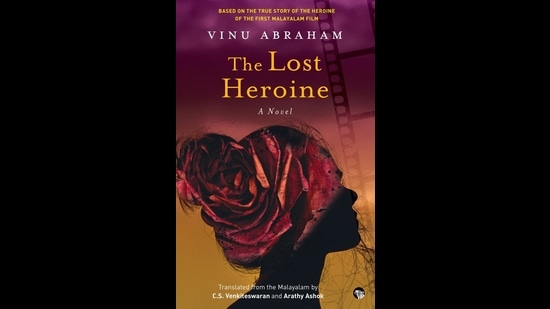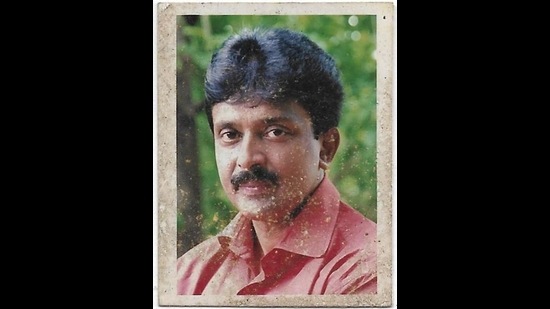Review: The Lost Heroine by Vinu Abraham
PK Rosy is the first female actor of Malayalam cinema. However, scant regard is paid to her in the annals of film history in Kerala and beyond. Perhaps very little is known about her existence beyond select film circles. Last year, the Women in Cinema Collective (WCC) in Kerala launched a film society named after PK Rosy.

PK Rosy is the first female actor of Malayalam cinema. However, scant regard is paid to her in the annals of film history in Kerala and beyond. Perhaps very little is known about her existence beyond select film circles. Last year, the Women in Cinema Collective (WCC) in Kerala launched a film society named after PK Rosy. There are several reasons attributed to this absence. Rosy hailed from a community of Dalit Christians. Her parents, Paulose and Kunji were daily wagers. She worked menial jobs such as weeding and grass cutting for a livelihood. It was a life steeped in poverty. Besides, she was also a prolific actor in Kakkarissi plays, a kind of folk theatre in Kerala which blends both Tamil and Malayalam.
In her debut and the first Malayalam film ever, Vigathakumaran (The Lost Child, 1928) she played Sarojini, an upper caste Nair girl. When the film was released, Rosy was viciously attacked. Stones were pelted at her during the inaugural screening. Her hut was set ablaze by ruffians and Rosy had to run for her life. The director of the film and her co-actor, JC Daniel was driven to bankruptcy. The film attracted the wrath of several Hindu orthodox groups who were enraged by the presence of a woman in the film. Acting in film was equated with prostitution.
The mobs were also belligerent because a Dalit Christian had dared to play a Nair girl on screen. Things got so bad that both Rosy and Daniel had to leave Kerala to settle in Tamil Nadu. Rosy married Kesavan Pillai and spent the remainder of her life in Nagercoil. Her children know very little about this chapter in their mother’s life. Daniel had to rely on his practice as a dentist to make ends meet. Both had to forever relinquish their dreams of filmmaking. What was their mistake you ask? That they had attempted to make a film. After marriage, Rosy became Rajammal and erased her past thus permanently bidding adieu to her dreams and aspirations of a career in cinema.
Author Vinu Abraham heard the story of PK Rosy at an international film festival in Kerala during a protest by Dalit activist groups demanding that Rosy be accorded her rightful place in the history of Malayalam cinema. He realised that though he knew about the first film in Malayalam cinema, his knowledge about its leading lady was rather scarce. He found that very little was written or known about her life. Abraham’s novel is a fictional reconstruction of a period in the life of Rosy and her brief encounter with cinema. In the introduction, he writes, “Very soon, it dawned on me that I should go for a narrative which would employ liberal doses of imagination, albeit conforming to the broad parameters of her known realities and historical honesty – in fact, a novel”. Thus, Nashtanaika (Malayalam title) was born.
Over the years, the novel has run into multiple editions. It has also inspired several film renditions. Owing to its popularity, many readers now know about the tragedy of PK Rosy and the humiliation that she suffered. Abraham’s novel could be read as alternative history. The Lost Heroine probes into the silences of mainstream film history and through imaginative reconstruction, lays bare a period and an important event that shouldn’t be forgotten. His novel safeguards precious public and personal memory about the beginning of cinema in a state that boasts of a robust film culture. Special thanks are due to film scholar CSVenkiteswaran and Arathy Ashok for their efforts to translate the novel and make it available to a larger reading public beyond Kerala.

My favourite parts in the novel include Rosy’s evening strolls home after shooting for the film had ceased for the day. She walks past wealthy, upper caste Nair households where women lived a life of comfort. However, none of them were allowed to act in a film. As if her brief encounter with cinema was the genesis of a new found confidence, she feels triumphant that she can make her own choices unlike women who lived caged in their mansions.
The novel is set at a time when Regent Sethu Lakshmi Bayi was ruling Travancore state. In the novel, Rosy is so charmed by the Queen’s passing cavalcade that she forgets to bow down which was customary for all lower caste people. Rosy almost feels the Queen’s gaze upon her and wonders if the Queen could tell a lower caste person with a glance. The poignant moment accentuates Rosy’s persona rendering her alive as a human and just not a relic from history.
As for Vigathakumaran, no copy of it can be traced. The novel ends with Daniel’s children playing with the film reel, burning it as part of their games. Daniel doesn’t care anymore. From a distance, Rosy watches the gradual extinction of personal and public history, of a period being erased from her life. She, however, is not the lost heroine. PK Rosy is to be found in Abraham’s novel.
Kunal Ray is a culture critic. He teaches literary & cultural studies at FLAME University, Pune.





